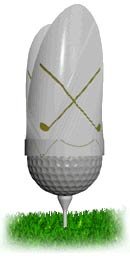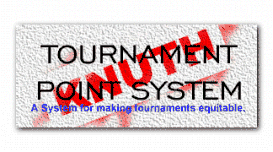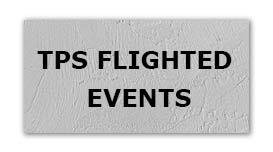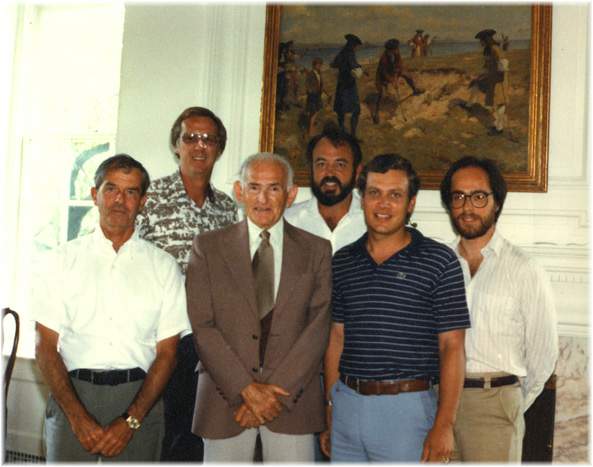|




|
HISTORY OF USGA HANDICAP PROCEDURES IN THE UNITED STATES Up to 1979
By Dr. Richard Stroud, Former USGA Executive Committee Member
This report summarizes the handicap procedures that have been used by the United States Golf Association up until the USGA Handicap Research Team's Formation in 1979. The information presented comes primarily from "Handicapping and Course Rating," by Lynn Smith (FORE, SCGA, Winter, 1978) and "The 1967 Handicap System," by Joseph C. Dey, Jr. (Golf Journal, USGA, 1966), from records of the Handicap Procedure Committee, and conversations with Lynn Smith, former Handicap Chairman of the USGA.
Until early in this century, handicaps in the United States were determined by first-tee negotiation. The pioneer in developing a more objective handicap system in the United States was Leighton Calkins, of Plainfield, New Jersey, a member of the USGA Executive Committee, President of the New Jersey Golf Association, and Secretary of the Metropolitan Golf Association. In 1904, Calkins devised a best-three-scores system which was adopted by the USGA seven years later, in December, 1911. In this procedure, a player's handicap was based on the average of his three best scores for the season. The best-three-scores procedure remained in effect for many years. Most early progress in handicapping involved course rating. Handicaps relate directly to the course ratings on which the handicaps were established. Consequently, equitable handicapping for competition on more than one course requires accurate course ratings. The Massachusetts Golf Association improved the handicap procedure in its early years by suggesting refinements in course-rating methods. William Langford, of Chicago, developed a fractional-par concept which further refined course ratings. In the 1930's, Thomas G. McMahon, who became President of the Chicago District Golf Association in 1942 and 1943 and President of the Southern California Golf Association in the early 1960s, developed Langford's technique and introduced use of "differentials" between scores and course ratings to provide portability of handicaps.
McMahon's name appears repeatedly in the records of handicap procedures and he has had a profound effect on the current handicap procedure. He was a very capable but hard and uncompromising man and was utterly intolerant of views contrary to his own. Without detracting from his undisputed knowledge of handicapping principles and practice, many feel some of the ideas attributed to and claimed by McMahon actually came from Chicago District colleagues Bill Langford, Chuck Eckstein, Jim Miller, Len Haldeman and others and from his USGA associates.
McMahon was responsible for the concept of "current ability" handicap based upon the best 10 of the last 15 scores. In 1938, he convinced the Chicago District Golf Association and later the golf associations of Northern California, Southern California, and Colorado, among others, to adopt the current-ability handicap. McMahon experimented with other handicapping algorithms, but "the best 10 of the last 15" remained his choice.
Richard S. Tufts, of Pinehurst, North Carolina, who became President of the USGA in 1956 and 1957, developed a "basic-ability" system based on the best 10 of the last 50 rounds. The USGA adopted the basic-ability handicap in 1947. This procedure was implemented and improved by William 0. Blaney, of Boston, Chairman of the USGA Handicap Committee.
Blaney, like McMahon, had a very strong personality, and the two were often in conflict. McMahon was a member of the USGA Handicap Procedure committee, but because of a particularly intense disagreement between him and Blaney, he resigned and became an outspoken critic of the USGA and its handicap procedures. His denunciations were widely published and he had angry, berating correspondence with the USGA. An article in the June, 1954 issue of Golf Journal, entitled "Course Rating for Women," documented another important change that was made in 1947. "The USGA Handicap Committee adopted the Massachusetts Golf Association's recommendations for Course Ratings for men in 1947." This method called for rating on a hole-by-hole basis, where each hole was rated in tenths of a stroke. As a rating guide, the 1953 Handicap Manual, (1953 USGA Golf Handicap System for Men and subsequent edition), contained descriptions of golf holes that typified holes of a specific rating.
Some examples follow:
"Rating 2.6: Holes off this rating are probably non-existant as they call for scores of four 2s and six 3s out of every ten tries, a feat that would be unreasonable to expect of the best player in the world.
"Rating 3.9: Holes of this type are very close to normal4.0 hole and usually are played with a full drive and perhaps a full niblick; holes probably between 340 and 375 or 380 yards. Holes in this class may be shorter than indicated above if visibility of the green is poor and the exact location of the flagstick is difficult to determine from the point where the shot to the green will be played.
"Rating 5.4: These are either extremely long holes or are freak, trick holes with extreme difficulties such as 'postage stamp' greens, misplaced traps, etc. It is doubtful if there are many such holes in the country, so that each is a problem in itself and more or less outside the boundaries of any specific set of rules."
The hole ratings were summed and rounded off to the nearest whole number i.e., "the rating of the entire course is the total of the separate hole ratings-, with the final figure being the nearest whole number such as 69 or 72, and never in fractions, such as 69.4 or 71.8."
During the same period, the Chicago District Golf Association endorsed the "Fractional Par rating method," which McMahon claimed to have "originated and developed." The Chicago method said the rating depended on 1) yardage, 2) course difficulty, and 3) experience. "Course difficulty" was based on a course's overall character rather than the sum of a hole-by-hole evaluation. "Experience" meant the observation of the play of expert golfers and comparison of their performance with the existing rating.
Both course-rating procedures were approved by the USGA. The 1953USGA Handicap Manual said, "Course rating for men made under either the USGA (Massachusetts) Course Rating System or the Fractional Par method of the Chicago District Golf Association are the only ones to be used in Computing handicaps under the USGA Handicap System."
The handicapping scene became chaotic in 1953 when the USGA adopted the Chicago, or McMahon, current-ability handicap concept, retained the basic-ability method and also approved a third method devised by the Women's Committee. According to "Course Rating for Women," the women's method introduced in 1953 was based on "The five best scores made under the USGA Rules of Golf within the current and last previous playing season or calendar years." Also "The handicap is figured by taking four-fifths of the difference between the average of course rating or par for the five rounds played and the average of the five best scores." Associations, or even clubs, were free to choose either the basic-ability or current-ability for calculating men's handicaps.
At the beginning of 1958, after studies by Herman Freydberg, of the Metropolitan Golf Association, the USGA consolidated these three approved Systems into one which took into account the best 10 of the last 25Rounds. The proposal was intended to be a compromise between the current-ability and basic-ability concepts. (Some members of the USGA had staunchly supported the basic-ability method, feeling McMahon was too radical. Accepting "the best of 10 of the last 25" was a concession that his ideas had some merit. McMahon was never willing to accept such a compromise.)
Herman Freydberg was Chairman of the USGA Handicap Procedure Committee from 1960 until 1970, when the committee was eliminated (for nearly a decade). Freydberg made many contributions that remain in the Handicap Procedure.
A single system simplified the USGA position; but some areas, notably Chicago, California, and Colorado (where McMahon had great influence) continued using the current-ability method (best-lO-of-the-last-15) so uniformity was still not achieved. The July, 1958, issue of Golf Journal reported that a survey showed that 88 golf associations were using the USGA method (best-lO-of-the-last-25) and 12 were using other systems.
The USGA's dual course-rating methods' (Massachusetts and Chicago) remained in effect until April, 1960, when a new single approach was introduced. It involved a "preliminary yardage rating' for each hole that was "modified, if necessary, in the light of significant course conditions, called Rating Factors." The Chicago District Golf Association continued to use the Fractional Par method.
In 1963, the USGA introduced another course-rating system. It was "essentially the procedure developed by the Massachusetts Golf Association, modified by principles of the Fractional Par rating used by the Chicago District Golf Association with one official yardage rating chart calculated by the USGA."
In 1966, the basic versus current ability handicap controversy was resolved when a compromise position was worked out by Joseph C. Dey, Jr., USGA Executive Director, and Lynn A. Smith, President of the Southern California Golf Association in 1965 and of the California Golf Association in 1966. Smith was then responsible for SCGA handicapping. Their solution was the current "more-basic" handicap (i.e. best 10 of the last 20) which became effective on January 1, 1967. This concept was adopted over McMahon's vigorous protest. Uniformity was achieved at "the best 10 of the last 20" despite McMahon's continued opposition.
Lynn Smith, who became a member of the USGA Executive Committee in January, 1966, had known McMahon since 1922 when Smith's father, W. Linford Smith, introduced McMahon to golf handicapping by inviting him to handicap the golf tournament at the Annual American Dental Trade Association meeting in Chicago. Smith became Chairman of the USGA Handicap Committee in 1968. He succeeded Clarence W. (Gus) Benedict (1961 through 1963), Charles P. Stevenson (1964 and 1965), Eugene A. Pulliam (1966), and C. McDonald England (1967). Smith became Chairman of the Handicap Procedure Committee when that position was reinstated at the insistence of Gordon (Joe) Ewen, who succeeded Smith as Chairman of the Handicap Committee in 1975.
Golf Digest described the compromise worked out by Dey and Smith as follows): "The basic reason for this change was to bring together the philosophies of different handicapping agencies in this country in hopes of arriving at a uniform system. The USGA feels that handicaps should reflect, at least in part, a golfer's basic skill at the game as well as his current ability at the time of handicapping. To this end, the USGA has in the past used the best 10 of the last 25 scores. However, some influential area associations, such as the Chicago District golf Association, used the best 10 of the last 15 scores, thus putting more emphasis on a player's current ability. The change from 10-of-25 to 10-of-20 will cause handicaps to reflect more of a golfer's current ability, but USGA officials are content that the new 20-score base will be sufficient to also indicate a golfer's basic skill."
Another significant change was announced January 1, 1967. Effective that date, Course Ratings were expressed in decimals and not rounded off to the nearest whole number.
As a supplementary part of the 10-of-15 procedure, the concept of stroke control, whereby abnormal scores on a hole or holes were adjusted for the handicap computations, was used. When the 10-of-20 compromise was adopted in 1967, stroke control was eliminated as a part of the "Uniform Handicap System" (as it was called) although it did continue in effect in Southern California at McMahon's urging.
McMahon was the originator of the stroke-control concept and introduced it in the Chicago District Golf Association in 1957. The USGA did not approve of the procedure and opposed its inclusion in the new handicap procedure. The USGA has since changed its position on stroke-control and includes the concept in its current handicap procedure. In 1967, Mac England, Chairman of the USGA Handicap Procedure Committee, proposed to the USGA Executive Committee that entries to USGA competition snot be accepted from areas where equitable stroke control continued in effect. No such action was taken.
The Northern California Golf Association had been practicing equitable stroke control but, in the spirit of cooperation for national uniformity, eliminated it at the time of the best-10-of-20 compromise. This situation lasted for one year until a clamor from NCGA members demanded reinstatement of equitable stroke control.
Several approaches to the problem of scoring uncompleted holes were tried, but the stroke-control concept proved to be the most logical solution. Equitable stroke control, therefore, was made a part of the USGA Handicap System in March, 1973.
Since then, equitable stroke control has become better understood and serves a vital function as a handicap-control method.
Implementation of equitable stroke control was one of many significant changes to the Handicap Procedure that took effect while Lynn Smith was Chairman of the Handicap Committee. The June, 1971, issue of Golf lists seven amendments to the "USGA Handicap System." Among these is the lifting of a restriction that only scores from the current or immediately preceding year were admissible for handicap calculations. New guide-lines for handicap-stroke allocation were presented, and nine-hole handicaps are described. One significant change that was not mentioned was the abandoning of course-rating tables (or charts) for a course-rating formula.
Over the years there has been a difference of opinion on the question of whether a single handicap was applicable to both stroke and match play. For example, the 1947 USGA Handicap Manual stipulated that a handicap was intended for use in stroke play competitions and recommended using 85percent of that figure in match play. There is no record of the origin of the 85-percent factor. (The British did use 75-percent of handicap for match play. It is worth noting that the British System accepts, for purposes of handicapping, scores made under stroke-play rules only). Presumably, this adjusting factor was based on some competitive results. The 1974 study by Trygve Bogevold, of the USGA Handicap Procedure Committee, confirmed the validity of the single-handicap concept by other investigators. This position has been confirmed and concluded that a dual system of handicapping would be confusing. The problem was resolved in favor of applying one handicap to either type of competition. It was decided to use "80 per-cent of the average differential plus one" for the single handicap. This illogically gave a handicap of one to a golfer whose average differential was zero. It is speculated that the formula was used for computational simplicity. When the 1967 revision to 10-of-20 was made, the 80-percent-plus-one was changed to 85 percent (which proved to be equivalent for most handicaps). There was no connection between the changes; changing them simultaneously was simply a matter of convenience.
The selection of 85 percent (or 80 percent plus one) can be interpreted as meaning the USGA handicap procedure was intended for match play (considering the USGA's former use of 85 percent for match play it might also be a compromise between the 100 percent (for stroke play), and 75 percent (for match play) used by the British.
The 85 percent factor was accepted until 1971 when Dr. Francis Scheid published results of his research in Golf Digest. His results were confirmed in 1) a study by Dr. Clyne Soley, that was commissioned by the USGA, and 2) an exhaustive analysis and report prepared by Trygve Bogevold. They agreed that the 85 percent factor would have to be increased to somewhere near 107 percent for complete equality. The USGA felt any such adjustment would be excessive, that a "bonus for excellence" for the better player should be maintained and an "incentive for improvement" provided the higher handicapper.
In the meantime, Norman Falkner had studied the same problem in Canada, and the Royal Canadian Golf Association had adopted a factor of 96percent. This represented an increase in handicaps of 12.9 percent over those computed at 85 percent. This percentage had been tested in that country in actual practice over a period of months and found to be satisfactory. The USGA then determined that 96 percent should be the maximum adjustment for USGA handicap's. One-hundred percent might seem to simplify handicap computations, but such an adjustment would have constituted a17.6 percent increase, which was deemed excessive. After consultation with district golf associations through the United States, the change from 85 percent to 96 percent became part of the Handicap Procedure on January 1, 1976.
This led to a new problem in multi-ball events. Even at 85 percent, two-man and four-man teams achieved unrealistically low scores, such as15 strokes, or even more, under par. This problem was magnified by the increase in handicaps because of the change to 96 percent. To offset the effect of the increase and correct the existing problem, handicaps for multi-ball play were reduced. The USGA Handicap Procedure Committee recommended that 80 percent of handicaps be used in better-ball-of-two and 70 percent in best-ball-of-four competitions.
These new allowances were not as widely publicized as the handicap increase, and the golfing public wasn't generally aware of them until the spring of 1976. The reductions met with resistance because they seemed to take away the advantage which had just been bestowed by the increased handicap percentage. (It was said that "the USGA giveth and the USGA taketh away").
To assure the appropriateness of the multi-ball revisions, the USGA retained Dr. Francis Scheid and Dr. Clyne Soley as consultants. Trygve Bogevold and Dr. Richard Stroud joined the research as volunteers. The studies indicated the revised allowances unduly penalized higher handicappers, and so a smaller schedule of allowances was announced in 1977 to take effect January 1, 1978. Implementation of the allowances is evidence that a one-number handicap is not adequate for all types of golf competition.
The USGA emphasized that multi-ball stroke-play events are a very different form of competition from individual stroke play. Percentage allowances, therefore, are necessary for equity. Golfers were told not to regard the allowances as a reduction in their individual handicaps but as team adjustments to put the teams on an equal footing.
Despite this reasoning, the golfing community was unwilling to accept the reductions for team play. Others still object to the change from 85 percent to 96 percent. The discontent may be due in part to the sequence of changes in the handicap procedure.
In 1977, Lt. Commander Dean Knuth of the Naval Post-Graduate School proposed an improved course rating system that involved numerical rating of ten characteristics for each hole. These ratings along with the weighted factors for each characteristic provided an adjustment to the distance rating for the course. The method used some elements of decision theory and was intended to bea systematic, quantitative approach to course rating. It was the basis for the present USGA Course Rating System. Knuth eventually became the USGA's Senior Director of Handicapping.
In May 1978, Dr. Richard Stroud, a consulting member of the Handicap Procedure Committee, wrote a letter to Gordon Ewen, Chairman of the Committee, proposing the concepts of the Slope System. In discussing a 1971 proposal by Dr. Clyne Soley and Trygve Bogevold for a slope-like approach to handicapping, Stroud wrote, "It should be emphasized that the proposed scheme for selecting course-difficulty parameters is based on length alone. There is a significant chance some more sophisticated methods will prove necessary; i.e., the Knuth method for refining course ratings and a similar procedure for predicting slope." This proved to be the case, and course rating became a two-number procedure in 1981.
At the USGA Annual Meeting in New York City on January 31, 1979, Joe Ewen announced that the USGA Handicap Procedure Committee had approved formation of the Handicap Research Team (HRT). Frank Thomas, USGA Technical Director, was named to lead the HRT. The plan was for the HRT to perform a two-year, low-profile study that would evaluate the current handicap procedure, identify any shortcomings, and, if necessary, recommend and test alternate methods.
The original HRT was composed of: Frank Thomas (Chairman), LCDR Dean Knuth, Dr. Fran Scheid, Dr. Lou Riccio, Dr. Clyne Soley, Dr. Richard Stroud, Lynn Smith and Trygve Bogevold. The HRT researched and refined many aspects of the handicap procedure including course rating. The concepts of expert and bogey ratings emerged. The present USGA Course Rating System, which includes Bogey Rating and Slope Rating, was developed and tested by Knuth. Over the years, Dean Knuth became Chairman, followed by Dr. Richard Stroud. Lynn Smith, Clyne Soley and Trygve Bogevold have all passed away. The current HRT membership consists of: Dr. Richard Stroud (CA), Chairman; Dr. Lyle Calvin (OR), Dr. Frank Engel (VA), Dean Knuth (CA), Dr. Lou Riccio (NY), Dr. Fran Scheid (MA), Col. Warren Simmons (CO) and Peter Wilson (England).

In 1982, the Colorado Golf Association rated all of its courses using the new procedure, under the leadership of HRT member Dr. Byron Williamson. In 1983, Colorado tested the Slope System with positive results. Five other states joined Colorado in the test during 1984, and others followed in subsequent years. Since January 1, 1990, every golf association in the United States that rates golf courses, uses the USGA Course Rating System. As of 1994, foreign golf associations licensed to use the System were: Scotland, Canada, Ireland, Wales, Sweden, Denmark, Germany, France, Bermuda, the Republic of China, Costa Rica, France, Hong Kong, India, Jamaica, Korea, Malaysia, Mexico, the Netherlands, Indonesia, Singapore, and the Philippines. The possibility of a common worldwide use of the USGA Course Rating system using the USGA System is being discussed as interest grows.
|






